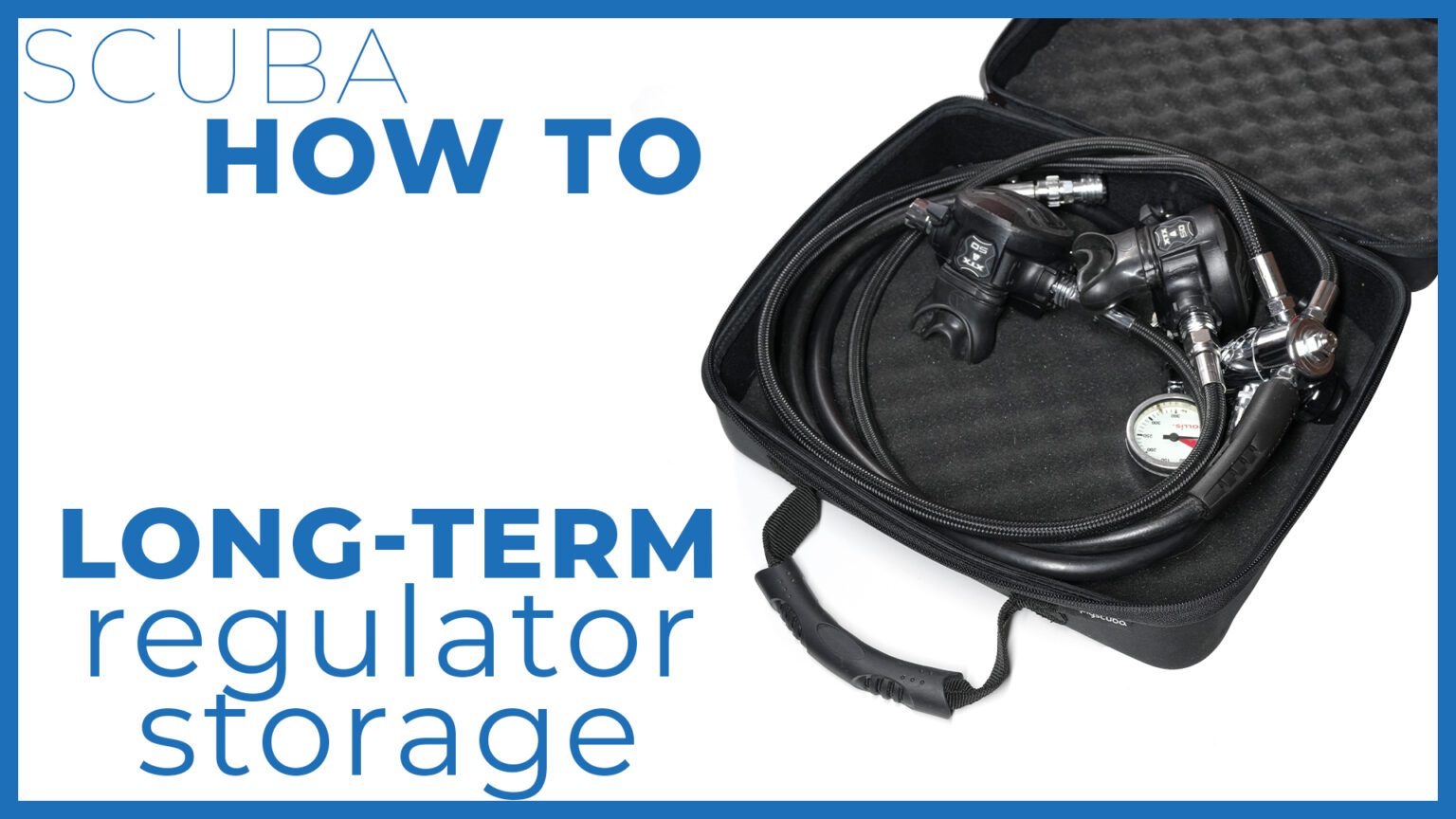Hi everybody, welcome to scuba diver magazine, we’re well into autumn now which means that a lot of scuba divers are hanging up their wet suits and regulators because the water is getting colder, so I figured now would be a good time to break down some good practices to store regulators properly for long periods of time.
Too many divers just stow them away in their reg bag only to pull them out next spring and the leak. But, there are a few things that you can do to extend their lifespan ready for the next dive season.
Wash and Clean
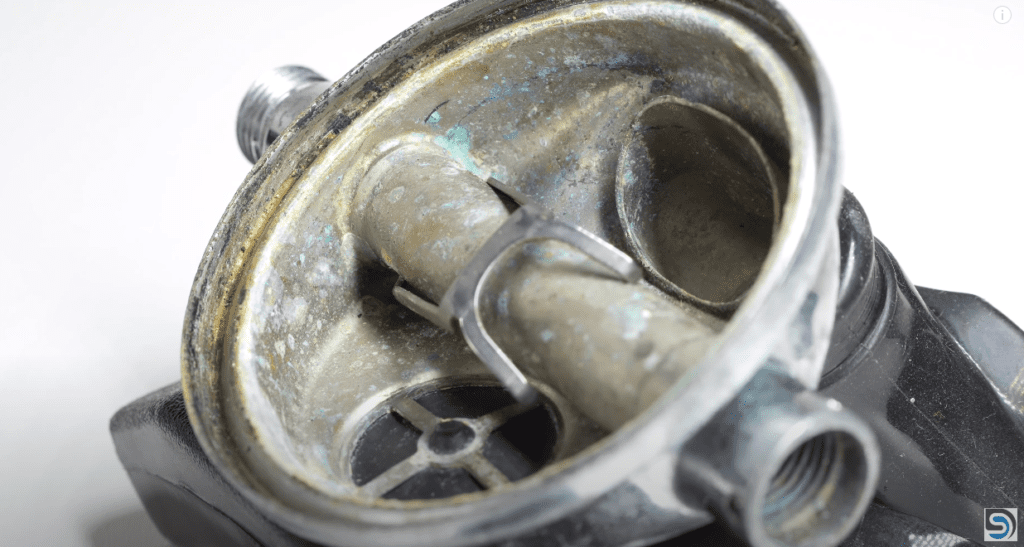
One of the worst things that you can do is store your regulators when they’re dirty because microscopic nasties can fester and damage your equipment and the next time you go to use your regulators, you’ll get a mouthful of something horrible if your regulators work at all.
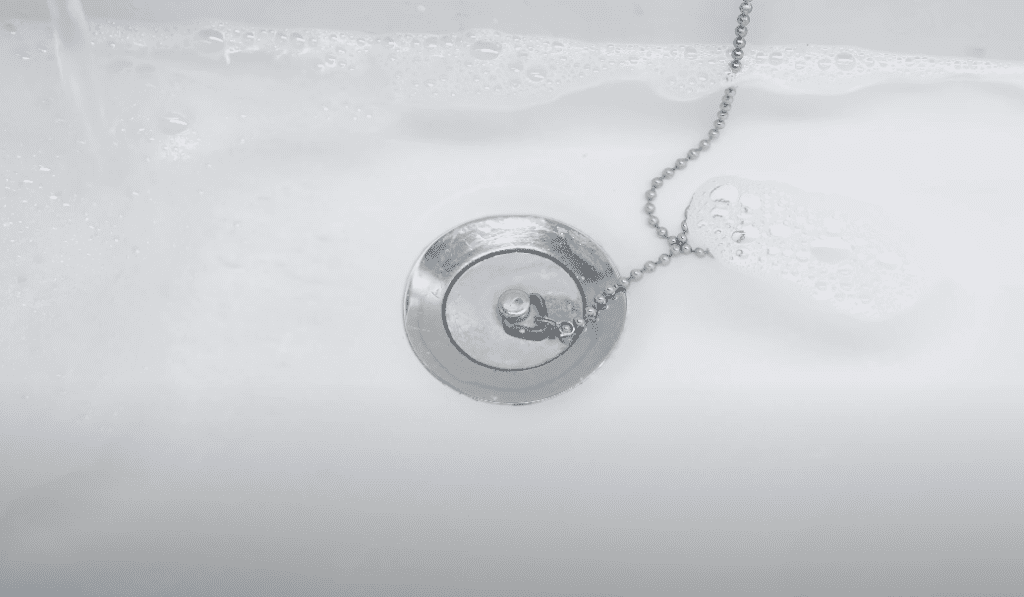
Fill a basin with some nice warm soapy water and pop your regulators in for a wash. You don’t need to use any fancy detergents unless you’re diving somewhere particularly nasty, a normal household detergent should do the trick, they’re antibacterial.
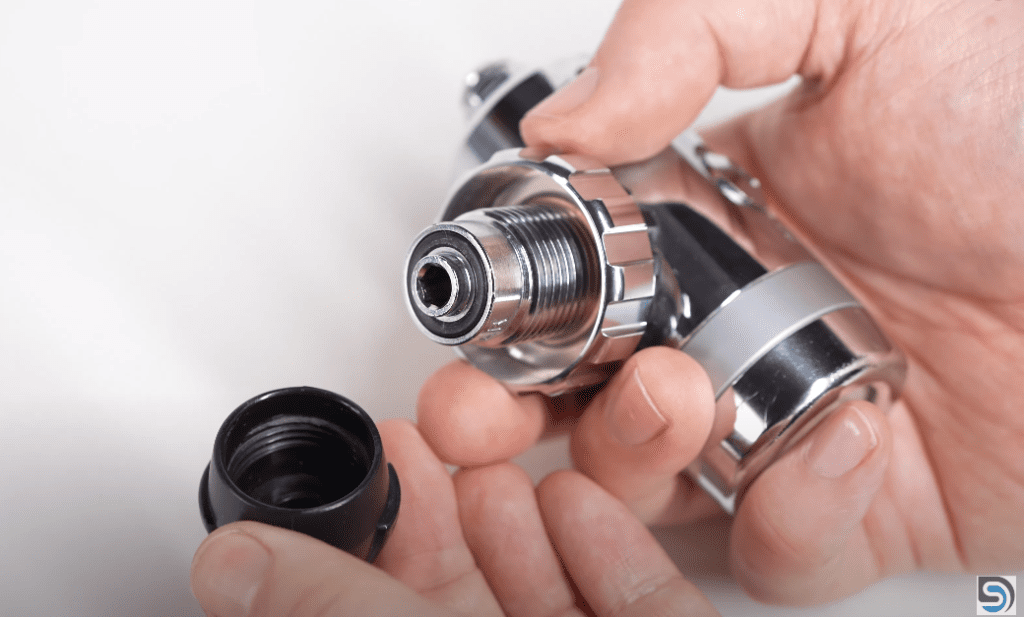


The best possible way to do this is pressurized on a cylinder so that there’s no way water can get inside the regulator. If you don’t have access to a cylinder there are two things that you need to remember; The dust cap on your first stage is not watertight. It’s a dust cap, it’s supposed to keep dust out, it can’t keep water out especially when submerged, there may be some designs that can but, it’s better to be safe than sorry.
A better option, if you’re in doubt, to keep water out of your 1st stage when washing is holding your thumb over the inlet. The other thing is to never hold the purge button down when submerged if your regulator is depressurized. If you push the button, it opens the valve and with no air pressure rushing out water can get inside the hose and cause rot from the inside.
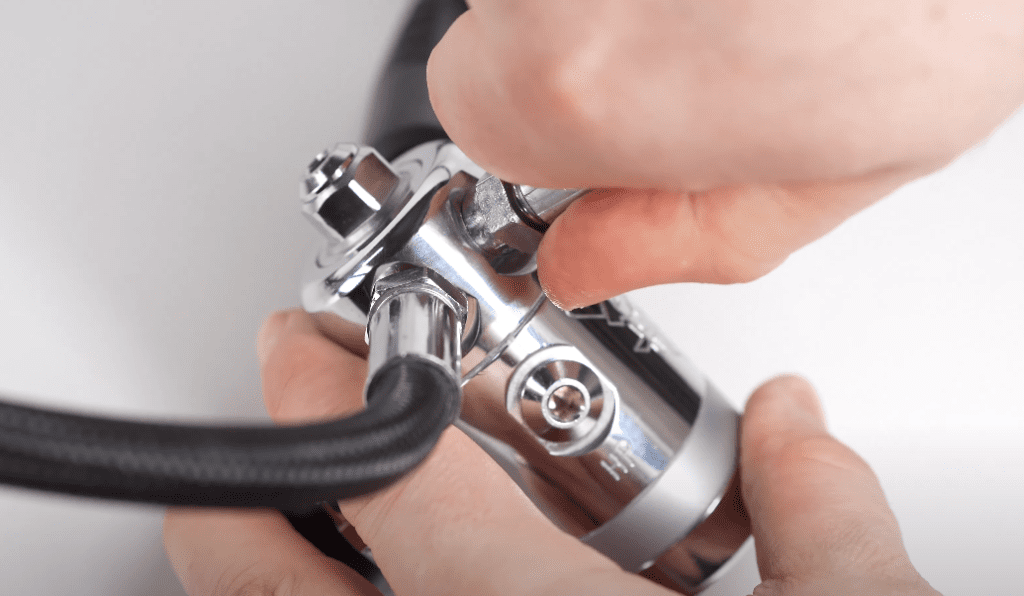
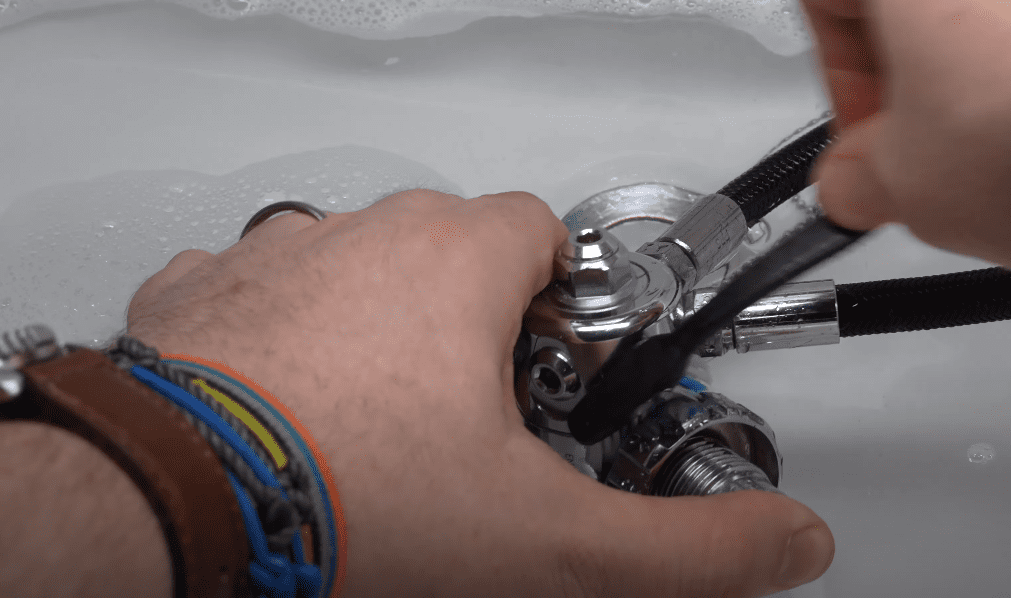
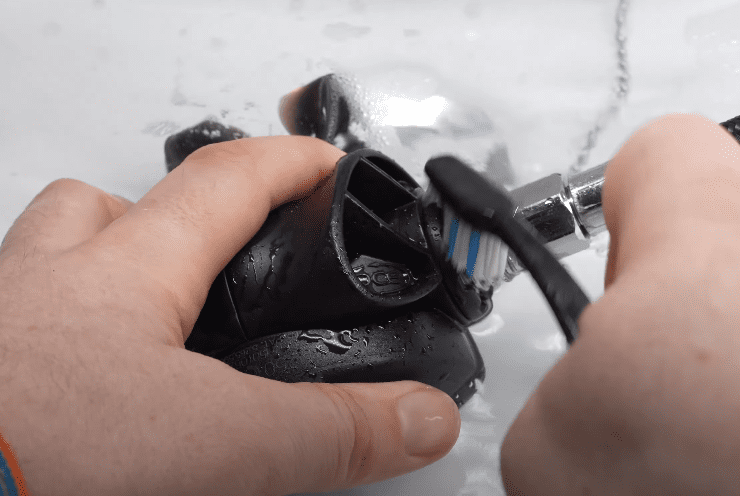
With a cheap or old toothbrush work your way around the regulator giving it a gentle scrub in all of the little corners to dislodge any contaminants. Start with your 1st stage and work your way down. Pull back any hose protectors you have and give those areas a scrub as well, and check that your hoses are still nice and tight. They do work themselves free over time so give them a twist and make sure that they don’t need to be tightened.


Check down the length of each hose and look for any wear and tear or anything worth replacing because now’s the time to get a replacement if they need it. Check the other end of each hose and make sure the fitting is nice and tight, give it a scrub, and then move onto the 2nd stages, quick release fittings and gauges.
More visual checks for wear and tear and external scrubbing and give it all a good rinse with fresh water before drying your regs out completely inside and out. If you leave moisture inside the 2nd stage it can make that exhaust valve stick so towel dry it and do your best to get all of the moisture out of the 2nd stage as possible.
Prepare


If you’re not a regulator engineer, then don’t go poking around and adjusting any part of your regulator that requires a tool. Tightening hoses and port plugs should be Ok but if you need a tool to adjust something then it’s best left to professionals. But, for storage there is something that you can do, it’s best that you reduce the force on sealing surfaces as much as possible to reduce leaking down the road. And one of the worst culprits is the sealing surface inside the 2nd stage because it always has a spring pushing it closed.
If you can relieve some of the tension on that spring it can help to reduce the chances of leaking. So, if your regulator has a breathing adjustment knob, unscrew that as much as you can by hand. Don’t force the mechanism, just unscrew it as much as it normally can and that reduces the amount of force so your regulators don’t bed in as much.
Some Atomic Regulators actually have an automatic storage mode that does something similar when depressurized for storage and some Scubapro regulators have a manual storage mode by pressing and turning the purge button.

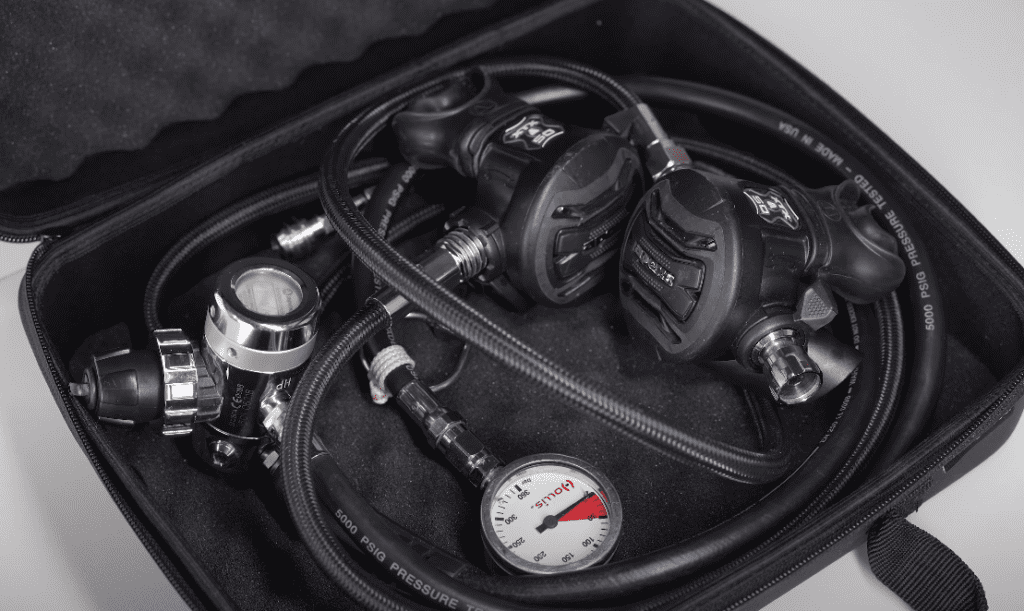
Then, you’re going to pack it away somewhere safe. In an ideal world the hoses will be kept as straight as possible with no tension or force applied to them so they’re not bent or pulled in any parts. But, the next best thing is curled up gently in a reg bag and sealed up to prevent the atmosphere or sunlight from degrading any of the materials and then store them away somewhere safe with minimal temperature extremes. Not too hot, not too cold. Just in a warm, dry place.
Service
If you’re storing your regulators for months on end, it’s best to plan a service for them well before your next use. The last thing that you want is to get your regs out for a big dive trip and they freeflow, but your dive centre is backlogged because everybody else is getting their regs serviced at the same time.
Ask your dive centre a good month or two ahead of your next dive trip so that you have time to get your regs into them, for them to get hold of particular parts that they may need, because they may have to order in an unusual replacement part above and beyond the standard service kit. For you to them get them back and take them on a check dive and adjusted if needed.
Remember that regs can often bed in after the first use after a service because the parts are all moving again and they might need a little tweak and it’s best that you take them on a shallow easy dive at first instead of a week long liveaboard in the middle of the ocean with limited spare part and tools.
But, to sum up, treat your regs like a loaf of bread; clean and dry and stored in a warm dark place but not for too long otherwise they can go stale. And if you don’t really know what you’re doing then it’s best not to disassemble your regulators or go fiddling about too much inside so you don’t damage anything and if you do know what you’re doing, then you should know how to relieve pressure on the seals so they last longer.
But, for more handy tips and tricks for scuba divers subscribe to the scuba diver magazine channel for more and if you have any questions pop them down in the comments and type the AskMark hashtag in your comment to get featured in an upcoming Q&A. thanks for watching everybody and safe diving.
